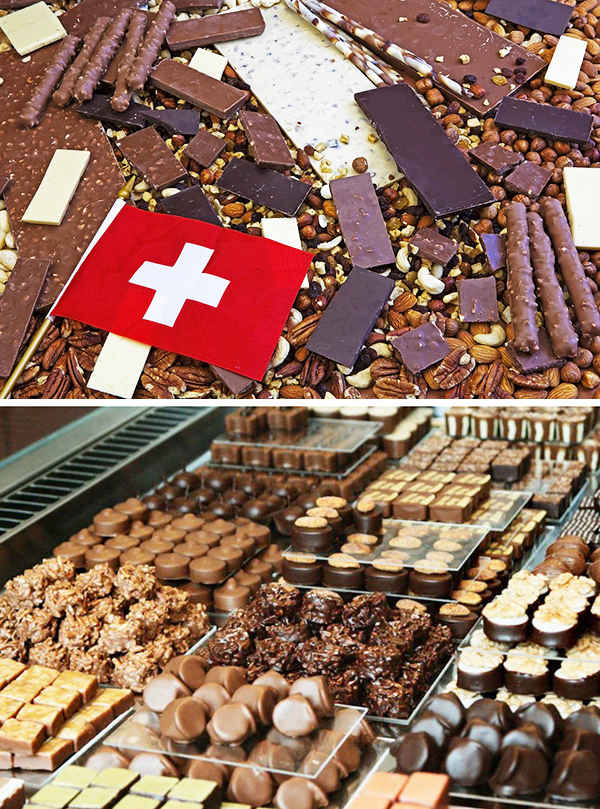Why is Swiss food so bad?
Let’s delve into the reasons why Swiss food is perceived as bad, analyze how it compares to other countries’ cuisines, and share some interesting facts about Swiss food for American readers.

Traditional Swiss Cuisine
Swiss cuisine is deeply rooted in the country’s history and geography. Traditional Swiss dishes are often hearty, simple, and designed to sustain people through harsh alpine winters. This can lead to a perception of blandness or lack of variety.
Examples
- Fondue: Melted cheese with bread.
- Raclette: Melted cheese served with potatoes and pickles.
- Rösti: A potato dish, similar to hash browns.
While these dishes are comforting and beloved in Switzerland, their simplicity and heavy reliance on cheese and potatoes can seem monotonous to those accustomed to more diverse or spiced cuisines.
Limited Use of Spices
Swiss food tends to be less spiced than the cuisines of many other countries. This can make it seem bland to people from cultures where bold flavors and spices are a norm.
Comparison
- Swiss: Minimal spices, focusing on the natural flavors of ingredients.
- Italian: Extensive use of herbs like basil, oregano, and garlic.
- Indian: Rich in a variety of spices – example: cumin, coriander, and turmeric.
This stark contrast can contribute to the perception that Swiss food lacks flavor and excitement.
Conservative Culinary Culture
Switzerland has a conservative approach to food, which means that there is less experimentation and fusion compared to other countries. This conservatism extends to the ingredients, cooking methods, and even presentation, leading to fewer innovative dishes.
Comparison
- Swiss: Traditional and conservative.
- American: Highly diverse and experimental, with influences from all over the world.
- Japanese: A balance of tradition and innovation, with a focus on presentation.
This conservative nature can make Swiss cuisine appear outdated or less appealing to those seeking culinary adventures.
Cost of Dining Out
Switzerland is one of the most expensive countries in the world, and this extends to its restaurants. The high cost can sometimes lead to higher expectations that the food does not always meet, resulting in disappointment.
Comparison
- Swiss: High cost of dining out, leading to expectations of exceptional food quality.
- Thai: Generally inexpensive with vibrant, flavorful street food.
- French: Known for high culinary standards, but at a wide range of prices.
When the price does not match the culinary experience, it can lead to a negative perception.
Local Ingredients and Seasonal Restrictions
Switzerland’s mountainous terrain and climate restrict the variety of local ingredients available year-round. This leads to a reliance on hearty staples and fewer fresh vegetables and fruits in winter.
Comparison
- Swiss: Seasonal and local, often limited in winter.
- Californian (USA): Year-round availability of a wide variety of fresh produce.
- Mediterranean: Abundance of fresh, seasonal ingredients.
Limited ingredient variety can result in a narrower culinary repertoire, contributing to the perception of Swiss food as lacking diversity.
Comparison with Other Countries
Swiss food’s perceived shortcomings become more evident when compared to other countries known for their rich and diverse culinary traditions. For instance, Italian cuisine is celebrated for its regional diversity and flavors, from the rich pastas of Bologna to the fresh seafood of Naples. French cuisine, with its meticulous techniques and emphasis on sauces and pastries, is often considered the pinnacle of culinary art. Meanwhile, countries like Japan offer a unique blend of traditional dishes and modern innovations, all beautifully presented.
In contrast, Swiss cuisine often remains within the confines of its traditional recipes, with less emphasis on innovation and presentation. This can make it less appealing to international palates seeking variety and excitement.
Interesting Facts about Swiss Food

- Chocolate Paradise
Switzerland is famous for its high-quality chocolate. The Swiss consume more chocolate per capita than any other country in the world.
- Fondue’s Origin
The iconic cheese fondue was actually popularized in the 1930s by the Swiss Cheese Union as a way to increase cheese consumption.
- Alpine Dairy Culture
Switzerland’s alpine pastures are ideal for dairy farming, contributing to the country’s rich tradition of cheese-making, with over 450 varieties.
- Rivella
A popular Swiss soft drink made from milk whey, which is quite unique and often surprises foreigners.
- Muesli
This popular breakfast food, a mix of rolled oats, nuts, and dried fruits, was invented by Swiss physician Maximilian Bircher-Brenner as a healthy, nutritious meal.
While Swiss cuisine may be perceived as bland or monotonous due to its simplicity, limited use of spices, conservative nature, high cost of dining, and seasonal restrictions, it has its own unique charm and traditional values. When compared to the culinary diversity of other countries, Swiss food might not always stand out, but it remains a vital part of the country’s cultural heritage.
Understanding these factors can help appreciate the subtleties and historical context of Swiss cuisine.












